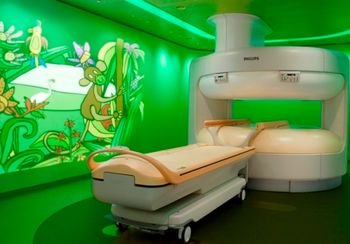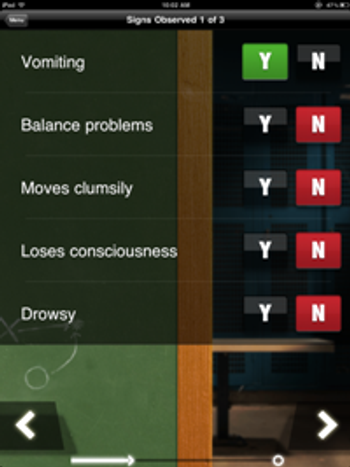Articles by Whitney L. Jackson

CMS recently extended to Oct. 6 the application deadline for hospitals interested in testing the first of four bundled payment models. It will be a while until you find out while which system the agency ultimately chooses, but this is certain - you will be affected.

The way you receive reimbursement for your services could soon transform. There are two problems, however: no one is sure to what degree it will change, and radiologists haven’t really had a voice in the conversation.

New patient-friendly MRIs with 0.3T offer more options for scanning larger patients, children, extremities, as well as people with claustrophobia.

If you opened a patient’s file before ordering or reading a CT or MRI scan and saw a note from a sideline coach saying the patient exhibited all the signs and symptoms of a concussion, what would you think? Would you be surprised?

Smaller hospitals might worry they don’t have enough staff or time to effectively reduce CT dose exposure for patients, but one hospital’s success proves it can be done.

Cuts to reimbursement payments are looming thanks to health care reform measures. No doubt, they have you and other specialty providers scrambling to identify strategies to compensate for the lost revenue.

The health care system as you’ve known it will look drastically different within the next few years, and the radiology industry is set to change with it. If you want to stay afloat and have a competitive practice, you must know which parts of the health reform legislation will affect you and how to handle them.

Using lower fixed-tube current or automatic exposure control techniques when performing adult and pediatric head CT scans can reduce radiation dose and ease concern about cancer risk, according to a recent study published in the Journal of the American College of Radiology.

Calling the results flawed, many in the radiology community are protesting a study released last week that suggested mammography hasn’t played a major role in the drop in breast cancer-related deaths.

In an unexpected move, the IOM called for an end to the 510(k) clearance process that has been under revision for the past year and proposed that Congress enact legislation for a new regulatory system after the FDA determines how to create one. The 510(k) process is the current pathway that authorizes low-risk medical devices, including those for imaging.

A new imaging agent currently in Phase III clinical trials could soon make it possible for more radiologists to see beta-amyloid - the brain plaque associated with suspected Alzheimer’s disease - through PET scans.

Once programmed for radiology, this technology will save time and will be a handy assistant, but first PACS vendors must get on board with health records integration.

The use of CT scans in children is rising. Although the improved technology makes scanning pediatric patients easier, many in the industry worry scans contain doses are too large for children’s body weight and size.

Advice from Andy Savo on negotiating the new marketplace

Design and structure improvements in PET and MRI scanners could soon alter how you practice nuclear medicine. These changes have made combining the scans for clinical treatment a possibility, according to a presentation at this week’s Society of Nuclear Medicine (SNM) annual meeting in San Antonio.

Boost your patient satisfaction and streamline your workflow with these top five tips.

Kiosks have been touted as a way to streamline patient registration, especially during peak hours, increase the accuracy of recorded patient data, collect co-pays or outstanding balances in a timelier manner, and better utilize front-office staff.

The two-year medical isotope shortage plaguing nuclear medicine is over. The five reactors providing two essential isotopes are fully functional, but industry leaders hope the flush supply won’t tempt you to abandon conservation efforts to return to business as usual.

CMS's new abdomen-pelvis CT scans combined-code requirement halves reimbursement, reducing payment for tumor, cancer, or similar scans.

Radiology’s first app received U.S. FDA approval in February 2011. More will be coming.

Industry comments on the draft criteria for meaningful use Stage 2 are in. As it stands now, specialty leaders aren’t holding out much hope the Stage 2 guidelines - which have no mention of imaging - will differ much from the uniform approach taken with Stage 1.

Throughout the industry, radiologists and referring physicians are using a number of strategies to limit patient exposure to unneeded radiation. New programs, equipment, and contrast agents are being used together to drastically reduce the amount of radiation patients receive.

The mention of teleradiology companies can prompt worry and fear about lost jobs and revenue in even the most established radiology offices. Here's what you need to know to leverage against the trend and protect your practice.

Aching hands and a sore back are often familiar ailments for those working in a digital imaging department. However, there is a trend among radiology practices and hospitals to provide workstations that are far more comfortable.






